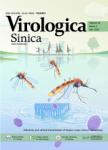Quantitative determination of the electron beam radiation dose for SARS-CoV-2 inactivation to decontaminate frozen food packaging
作者机构:Key Laboratory of Pathogenic Microbiology and ImmunologyInstitute of MicrobiologyChinese Academy of SciencesBeijing100101China University of Chinese Academy of SciencesBeijing100049China Department of Clinical LaboratoryThe Fifth Affiliated Hospital of Guangxi Medical UniversityNanning530022China China Isotope and Radiaton CorporationBeijing100089China Changchun CNNC CIRC Radiation Technology Co.LTDChangchun130022China
出 版 物:《Virologica Sinica》 (中国病毒学(英文版))
年 卷 期:2022年第37卷第6期
页 面:823-830页
核心收录:
学科分类:0710[理学-生物学] 0832[工学-食品科学与工程(可授工学、农学学位)] 08[工学] 083201[工学-食品科学]
基 金:supported by a grant from the Strategic Priority Research Program of the Chinese Academy of Sciences (XDB29040000) the Industrial innovation team grant from Foshan Industrial Technology Research Institute, Chinese Academy of Sciences the National Natural Science Foundation of China (32070163, 81761128002, 81871297) the China ATOMIC energy authority, Foshan High-level Hospital construction DengFeng plan and Guangdong Province biomedical innovation platform construction project tumor immunobiotherapy
主 题:Severe acute respiratory syndrome coronavirus 2(SARS-CoV-2) Inactivation Electron beam radiation Food decontamination Cold-chain
摘 要:The spread of severe acute respiratory syndrome coronavirus 2(SARS-CoV-2) from cold-chain foods to frontline workers poses a serious public health threat during the current global pandemic. There is an urgent need to design concise approaches for effective virus inactivation under different physicochemical conditions to reduce the risk of contagion through viral contaminated surfaces of cold-chain foods. By employing a time course of electron beam exposure to a high titer of SARS-CoV-2 at cold-chain temperatures, a radiation dose of 2 kGy was demonstrated to reduce the viral titer from 10^(4.5)to 0 median tissue culture infectious dose(TCID_(50))/mL. Next,using human coronavirus OC43(HCoV-OC43) as a suitable SARS-CoV-2 surrogate, 3 kGy of high-energy electron radiation was defined as the inactivation dose for a titer reduction of more than 4 log units on tested packaging materials. Furthermore, quantitative reverse transcription PCR(RT-qPCR) was used to test three viral genes,namely, E, N, and ORF1ab. There was a strong correlation between TCID50and RT-qPCR for SARS-CoV-2detection. However, RT-qPCR could not differentiate between the infectivity of the radiation-inactivated and nonirradiated control viruses. As the defined radiation dose for effective viral inactivation fell far below the upper safe dose limit for food processing, our results provide a basis for designing radiation-based approaches for the decontamination of SARS-CoV-2 in frozen food products. We further demonstrate that cell-based virus assays are essential to evaluate the SARS-CoV-2 inactivation efficiency for the decontaminating strategies.



